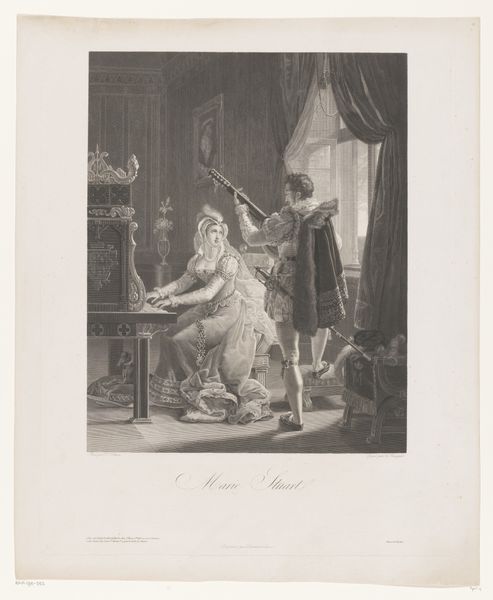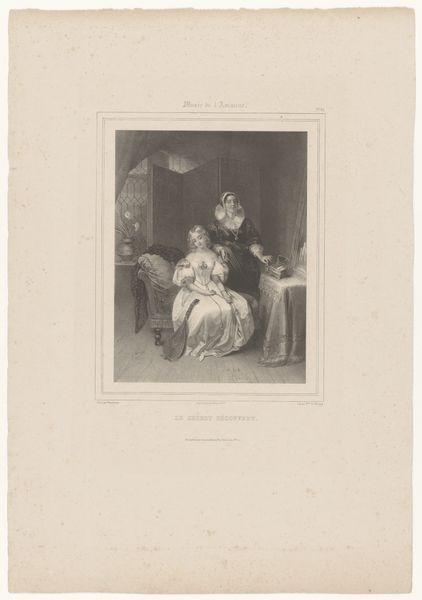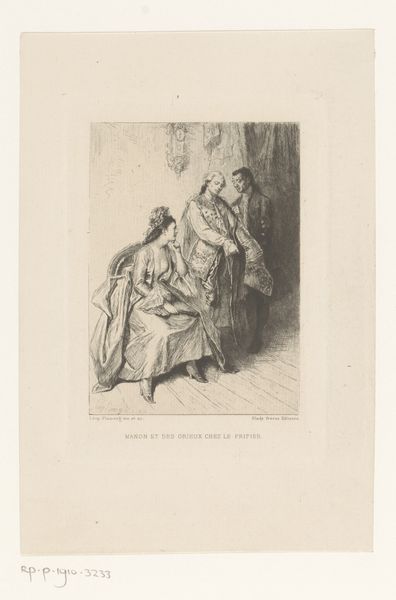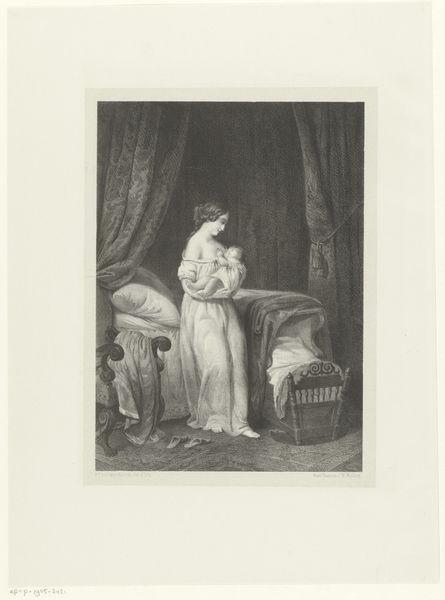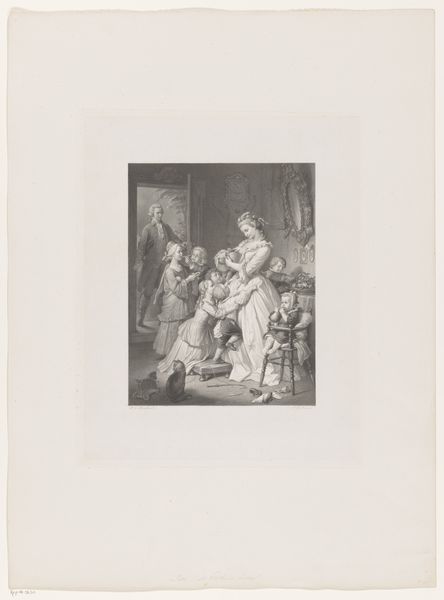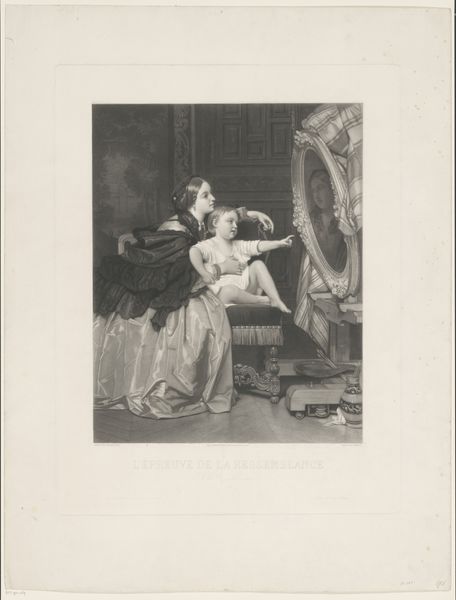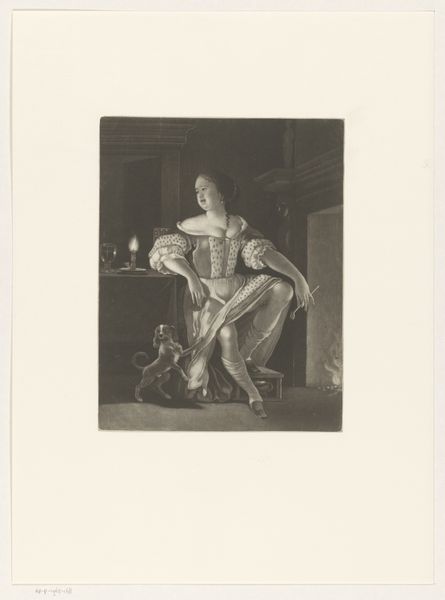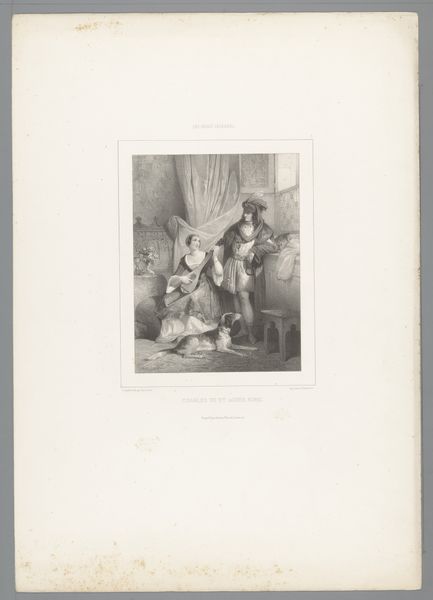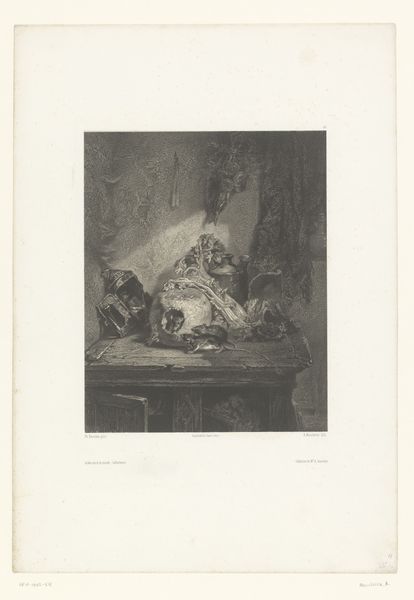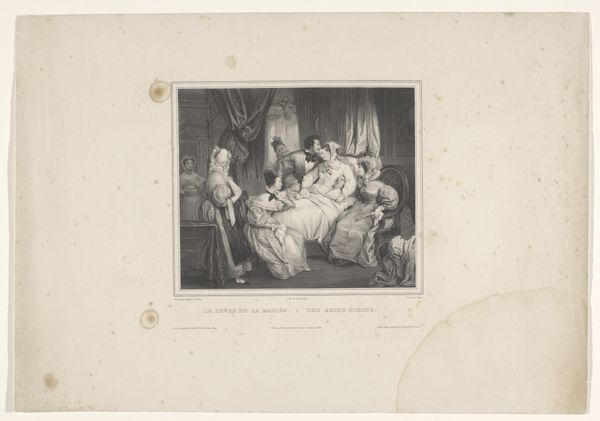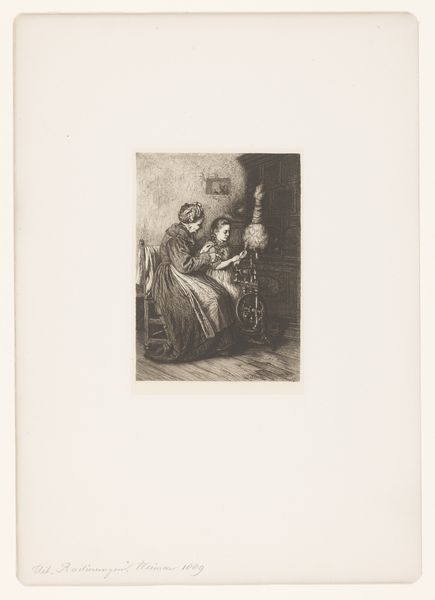
print, etching
#
narrative-art
# print
#
etching
#
genre-painting
#
realism
Dimensions: height 558 mm, width 403 mm
Copyright: Rijks Museum: Open Domain
Curator: What strikes me immediately is the blatant contrast in this image, "Twee dienstmeiden met de kleding van hun meesteres" by Émilien Desmaisons. Editor: It is rather unsettling. I'm immediately drawn to the slumped figure, the weight of labour, the visible effects of physical toil contrasting so sharply with the upright servant in her mistress’s attire. A rather biting social commentary, wouldn't you agree? Curator: Indeed. As an etching dating to 1837 and part of the Rijksmuseum collection, it uses a readily accessible print medium to distribute its message far and wide. Look at the textures Émilien has achieved. Editor: Precisely, this scene, steeped in realist traditions, offers a pointed representation of social inequity. The donning of finery is not simply an act of playful appropriation; it is loaded with implications regarding class aspiration, perhaps mockery. What does it mean to embody a position of power that is systemically denied? Curator: And the very act of creating prints like this raises interesting questions. Who was buying them, what was the target audience? Consider the labour involved in the making, too – the skills needed to execute such detail via etching are significant. Editor: And beyond skill lies intent: How subversive could a piece like this truly be? By titling it, "The Servant Mistress" Desmaisons offers insight. The fallen maid has a broom, she has been made 'servant,' whereas the other assumes the title of "Mistress." I question the limits of bourgeois social critique. Does it only provide a comfortable dose of vicarious transgression, ultimately reinforcing the status quo? Curator: Well, it undeniably captures a very specific social tension of the era, using a relatively accessible medium. Its preservation within the Rijksmuseum highlights its historical significance and materiality. Editor: But it does so through the very system that enables and protects inequalities. Thinking about those servants who, most likely, did not get the chance to reflect about their lives this way is indeed deeply unsettling. Curator: Still, its production tells us so much about material culture, class consciousness, the way images circulate. A powerful piece, whatever angle we take. Editor: Definitely gives one pause.
Comments
No comments
Be the first to comment and join the conversation on the ultimate creative platform.

